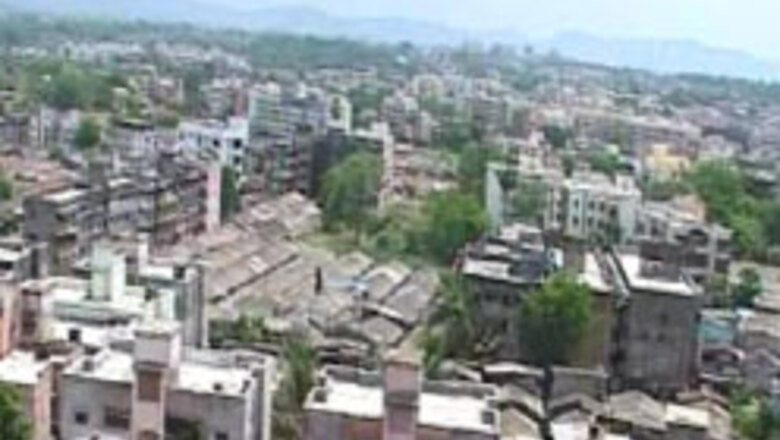
views
New Delhi: Over one-third of India’s population - or 38.2 per cent to be precise - will live in cities within the next two decades and this figure is likely to go up to 48 per cent in the next 45 years.
As per an estimate of the National Institute of Urban Affairs, urbanisation in the country by 2026 would be 38.2 per cent, while 34.40 per cent of the population will live in cities by 2021, Minister of State for Urban Development Ajay Maken informed the Rajya Sabha on Friday.
Several states, including Bihar, Himachal Pradesh, Orissa and the northeastern states of Sikkim Assam, Nagaland and Tripura, though are likely to remain more than three-fourths rural even two decades from now, say projections made by the 2001 census.
So much so that Bihar, for instance, is likely to see hardly any change in urbanisation levels in the next two decades, if the current trends continue. In fact, as per the projections of the Registrar General and Census Commissioner Bihar will remain at its low 10.5 per cent urbanisation level all the way up to 2016 and then move up only slightly to 11.6 per cent by 2026.
According to the projections for March 1, 2026, all the northeastern states -- except Mizoram -- are also projected to register very poor levels of urbanisation along with Orissa, Himachal Pradesh and Sikkim. Himachal Pradesh with an estimated 13.6 per cent of urban population is ranked among the poorest along with Sikkim (18 per cent), Assam (19.4 per cent) and Orissa (21.2 per cent)
Tiny Mizoram is likely to throw a big surprise by overshooting the national benchmark of 38.2 per cent at 68.6 per cent. In fact, Mizoram is projected to have breached the half-way mark in 2003 itself. As per the projection, Goa may have also crossed the 50% urbanisation level in 2002 and is projected to have 77.6 per cent of its population in urban areas by March 2026.
PAGE_BREAK
Another NE state --- Arunachal Pradesh --- is going to rank along side Gujarat and Punjab, crossing the 50 per cent urbanisation levels, reaching 52.2 per cent in two decades.
According to the Census 2001, out of the total population of 1027 million, about 285 million lived in urban areas and 742 million in rural areas. Thus, around 28 out of every 100 people in India live in urban areas.
This is only two more than the number that lived in urban areas a decade ago. For every 100 people living in rural area of India, 39 live in urban areas, which is four more than the number in 1991. Between the major states Jammu and Kashmir has smallest share of urban population being 0.9 percent followed by Assam.
As per 2001 Census data, Maharashtra had the biggest share of urban population with 14.4 per cent (41,019,734) followed by Uttar Pradesh at 12.1 per cent (34,512,629) and Tamil Nadu at 9.5 per cent (27,241,553).
The 10 districts that did no have any urban population according to Census 2001 were Senapati, Tamenglong, Churachandpur and Ukhrul (Manipur), Lawngthlai (Mizoram), Lahul and Spiti and Kinnaur (Himachal Pradesh), Upper Siang (Arunachal Pradesh), The Dangs (Gujarat) and Nicobar (Andaman & Nicobar Islands).
















Comments
0 comment